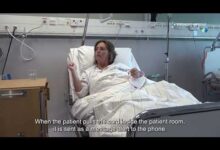NICE set to back digital technology to aid ADHD diagnosis in children

Clinicians in England and Wales could soon have access to digital technology that can provide a quicker diagnosis of attention deficit hyperactivity disorder (ADHD) in children and young people.
The new technology may help alleviate long NHS waiting times for diagnostic assessments, which are driving some families to go private.
“Children and young people with ADHD deserve to receive a diagnosis in a timely manner”
Mark Chapman
The National Institute for Health and Care Excellence has published draft guidance recommending the QbTest alongside a standard clinical assessment to aid diagnosis of ADHD in those aged six to 17.
The QbTest is a computer-based test that tracks the movement of participants while measuring three core symptoms of ADHD – inattention, impulsivity, and hyperactivity.
The results are then compared to data from a control group made up of people without ADHD of the same age and sex, noted NICE.
It said trial evidence showed using the test alongside a standard assessment resulted in a diagnostic decision being made for a larger proportion of patients within six months of their first assessment appointment.
Using the QbTest also resulted in clinicians being able to rule out ADHD in more cases, according to NICE.
NICE’s diagnostic committee, which assessed the technology, agreed that the QbTest should only be used to supplement professional judgement, and not replace it.
The institute said that its diagnostic committee had heard from patients that long waiting times, sometimes running to many years, were a significant issue.
They added that, as a result, many people were seeking private care to get a diagnostic assessment, but this was clearly not an option available for everyone due to the cost.
NICE highlighted that estimates of the prevalence of ADHD varied widely depending on the type of diagnostic criteria used.
ADHD is estimated to affect 1-2% of children and young people in the UK when applying the narrower World Health Organization’s classification of diseases ICD-10 diagnostic criteria,
However, prevalence increases to 3-9% of school aged children and young people in the UK when using the broader criteria of DSM5, the American Psychiatric Association’s diagnostic scheme.
Mark Chapman, director of NICE’s HealthTech programme, said: “Children and young people with ADHD deserve to receive a diagnosis in a timely manner. We heard from our patient experts there are challenges with current pathways.
“We’re committed to ensuring we get the best care to people fast while providing value for money to the taxpayer,” he said.
“This technology has the potential to generate tangible benefits to the lives of those waiting for an ADHD diagnosis,” said Mr Chapman.
“Evidence presented to our committee showed the QbTest could increase the number of children and young people who get a diagnostic decision within six months of starting assessment.”
A consultation has now begun on the committee’s recommendations, which will be open to submissions until 6 August, after which formal guidance is set to be published in October.
NICE was, however, unable to make recommendations on the use of technology to help diagnose adults or evaluate treatment effectiveness for those diagnosed with ADHD, due to limited evidence.
Companies have been requested by the institute to carry out further research before those tests can be considered for use in the NHS.







